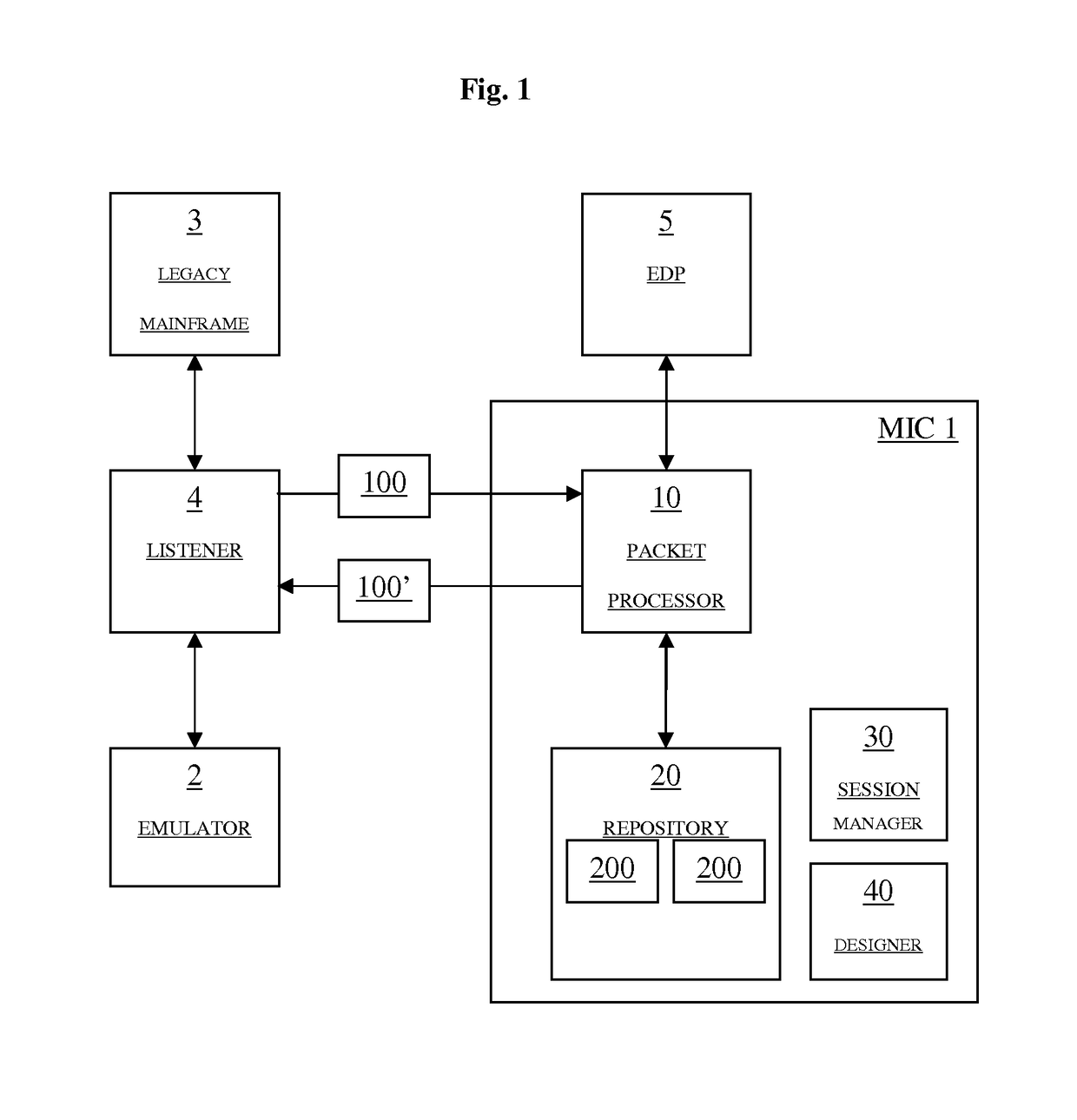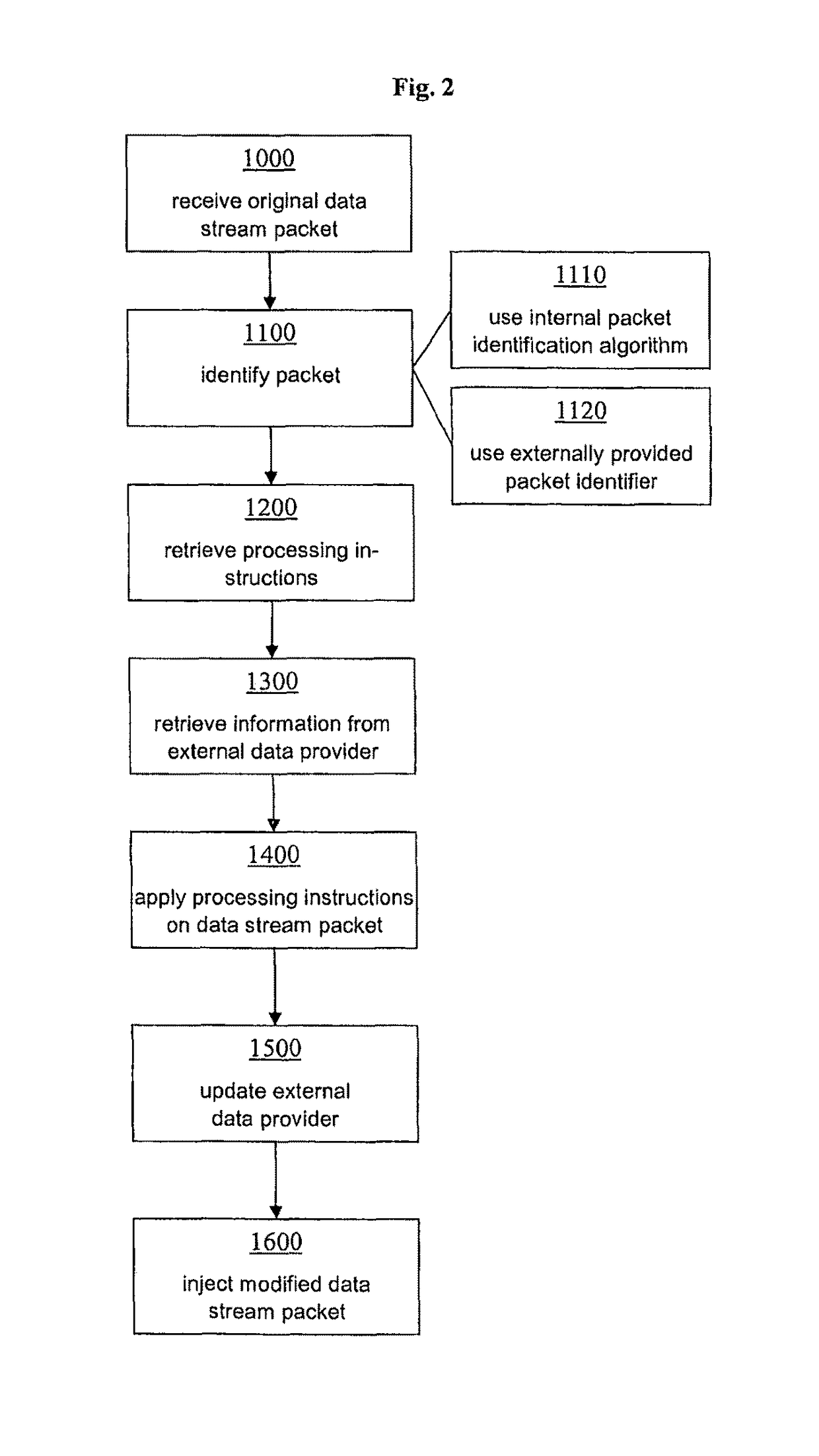Mainframe injection component and method for manipulating data packets communicated between emulators and mainframes
a technology of mainframe and injection component, which is applied in the direction of data switching network, multiplex communication, digital transmission, etc., can solve the problems of inability to adapt, adapt or extend the functionality of legacy applications, and the inability to adapt to the changing needs of an organization, so as to enhance the functionality of a given legacy mainframe system
- Summary
- Abstract
- Description
- Claims
- Application Information
AI Technical Summary
Benefits of technology
Problems solved by technology
Method used
Image
Examples
Embodiment Construction
[0026]In the following, the present technology is described with respect to various embodiments of a mainframe injection component (MIC) 1. As schematically shown in FIG. 1, the MIC 1 comprises in a preferred embodiment a packet processor 10 acting as a runtime component, which is adapted for receiving data stream packets 100 communicated between an emulator 2 and a mainframe 3 and for outputting modified data stream packets 100′ into the communication between the emulator 2 and the mainframe 3. To this end, the packet processor 10 is capable of applying one or more processing instructions 200 retrieved from a repository 20 (cf. FIG. 1) to the received data packets 100 in order to produce the modified data packets 100′ (see further below). The repository 20 may be any data store internal or external to the MIC 1. It will be appreciated that FIG. 1 only shows an extremely simplified example and that the MIC 1 of the present technology may be capable of working in connection with a pl...
PUM
 Login to View More
Login to View More Abstract
Description
Claims
Application Information
 Login to View More
Login to View More - R&D
- Intellectual Property
- Life Sciences
- Materials
- Tech Scout
- Unparalleled Data Quality
- Higher Quality Content
- 60% Fewer Hallucinations
Browse by: Latest US Patents, China's latest patents, Technical Efficacy Thesaurus, Application Domain, Technology Topic, Popular Technical Reports.
© 2025 PatSnap. All rights reserved.Legal|Privacy policy|Modern Slavery Act Transparency Statement|Sitemap|About US| Contact US: help@patsnap.com



